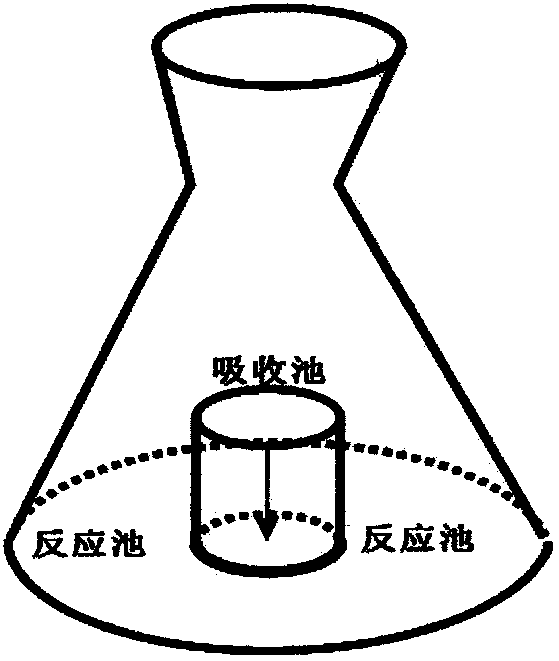Novel method for detecting activity of hydrogen sulfide synthetase by using hydrogen sulfide fluorescence probe and application of method
A technology for fluorescent probes and detection methods, applied in fluorescence/phosphorescence, material excitation analysis, etc., can solve problems such as cumbersome steps, and achieve the effects of good repeatability, good stability, and high quantum yield
- Summary
- Abstract
- Description
- Claims
- Application Information
AI Technical Summary
Problems solved by technology
Method used
Image
Examples
Embodiment 1
[0059] Embodiment 1: Novel absorption system detects the H released by the NaHS donor 2 S content
[0060] It has been shown in the literature that HS in NaHS solution - / H2S ratio is 3:1, so most of the NaHS solution is HS - . The control group added a certain volume of PBS to the reaction pool, and the experimental group added the same volume of different concentrations of NaHS donors to the reaction pool. 2 S fluorescent probe working solution), shake lightly for 1 hour at 37°C, use the reaction bottle-fluorescent probe method to detect the fluorescence intensity, the fluorescence intensity can reflect the H in the absorption solution 2 S content. The result is as figure 2 It was shown that the fluorescence intensity of the high concentration group (600 μmol / L) was greater than that of the low concentration group (200 μmol / L), and the fluorescence intensity of the experimental group was significantly greater than that of the control group.
Embodiment 2
[0061] Example 2: Different absorption times, H 2 The S fluorescent probe detects the H released from the NaHS donor 2 S content
[0062] The control group added a certain volume of PBS to the reaction pool, and the experimental group added the same volume of NaHS donors with different concentrations to the reaction pool. 2 S fluorescent probe working solution), at 37°C, shake gently for different times, and use the reaction bottle-fluorescent probe method to detect the fluorescence intensity, which can reflect the H in the absorption solution 2 S content. The result is as image 3 It shows that the fluorescence intensity of the 600μmol / L NaHS group is greater than that of the 200μmol / L NaHS group, and the fluorescence intensity of the experimental group is significantly greater than that of the control group. In the experimental group, with the same NaHS concentration, the fluorescence intensity of the 1h group is slightly greater than that of the 1 / 2h group. ** P## P<0.0...
Embodiment 3
[0063] Example 3: H 2 The S fluorescent probe directly detects the H released from the NaHS donor 2 S content
[0064] Prepare different concentrations of NaHS donors, add the same H 2 S fluorescent probe, using a full-wavelength scanning multifunctional reader (Varioskan Flash3001) (maximum excitation wavelength λex(max)=476nm, maximum emission wavelength λem(max)=513nm). The result is as Figure 4 display, with the H 2 As the concentration of S increased, the fluorescence intensity increased correspondingly in a dose-dependent manner. ** P##P<0.01 compared with 0 μmol / L NaHS group.
PUM
 Login to View More
Login to View More Abstract
Description
Claims
Application Information
 Login to View More
Login to View More - R&D
- Intellectual Property
- Life Sciences
- Materials
- Tech Scout
- Unparalleled Data Quality
- Higher Quality Content
- 60% Fewer Hallucinations
Browse by: Latest US Patents, China's latest patents, Technical Efficacy Thesaurus, Application Domain, Technology Topic, Popular Technical Reports.
© 2025 PatSnap. All rights reserved.Legal|Privacy policy|Modern Slavery Act Transparency Statement|Sitemap|About US| Contact US: help@patsnap.com



